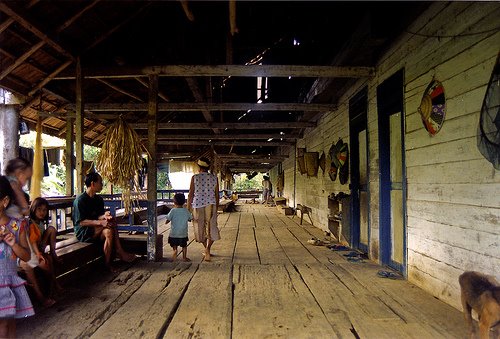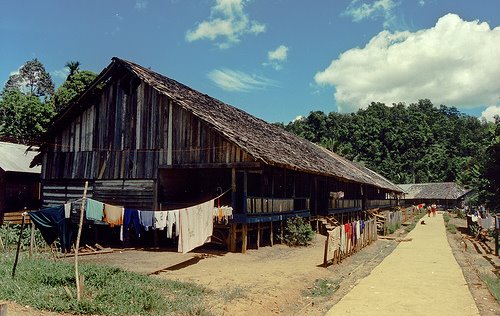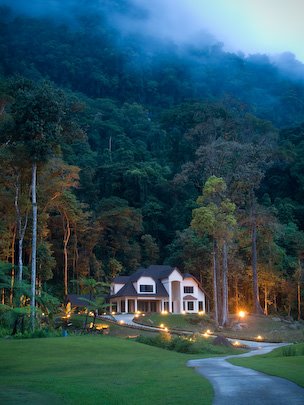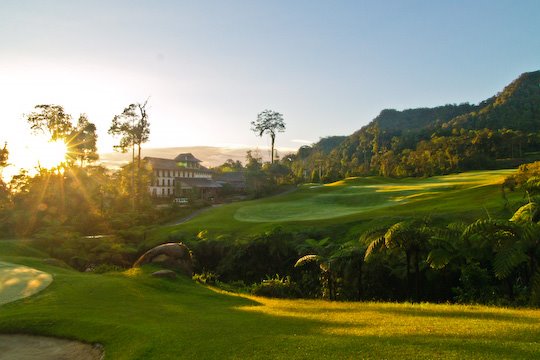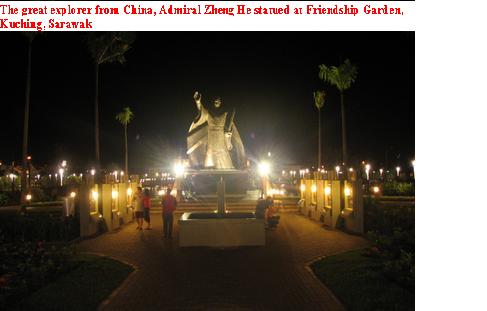Wednesday, January 14, 2009
Something About Sarawak, Borneo
Sarawak is one of the two Malaysian states on the island of Borneo, situated on the northwest of the island. It is the largest state in Malaysia; the second largest, Sabah, lies to the northeast. Sarawak has been a loosely governed territory under the control of the Brunei Sultanate in the early 19th century. James Brooke, an Englishman, became governor of Sarawak on September, 1841 and was appointed Rajah by the Sultan of Brunei on August 18, 1842; originally this territory was just the western end of later Sarawak, around Kuching. He ruled Sarawak until his death in 1868. His nephew Charles Anthoni Johnson Brooke became Rajah after his death; he was succeeded on his death in 1917 by his son, Charles Vyner Brooke. The territory was expanded under these three, mostly at the expense of areas nominally under the control of Brunei. In practice Brunei had only controlled strategic river and coastal forts in much of the lost territory, and so most of the gain was at the expense of Muslim warlords and of the de facto independence of local tribes. The Brooke dynasty ruled Sarawak for a hundred years, which is until 1941, and became famous as the "White Rajahs.
Sarawak is home to 28 ethnic groups, each with their own distinct language, culture and lifestyle. The Ibans form the major ethnic group on this land with about 31.2% of the total population per the year 2004 census. The Malaysian Chinese, who generally live in the cities, are the second largest group at 28.6%, followed by the Bidayuh, Melanau and other native tribes of Sarawak. The Malays, from Brunei constitute a large portion 21.4% of the population as well, mainly concentrated along the coast. The people of East Malaysia are generally known for their genuine friendliness and down to earth attitude.
Sarawak is home to 28 ethnic groups, each with their own distinct language, culture and lifestyle. The Ibans form the major ethnic group on this land with about 31.2% of the total population per the year 2004 census. The Malaysian Chinese, who generally live in the cities, are the second largest group at 28.6%, followed by the Bidayuh, Melanau and other native tribes of Sarawak. The Malays, from Brunei constitute a large portion 21.4% of the population as well, mainly concentrated along the coast. The people of East Malaysia are generally known for their genuine friendliness and down to earth attitude.
Tuesday, November 4, 2008
Borneo & The People
The island largely consists of dense jungle and mountains, reaching its highest point at Mt. Kinabalu (13,455 ft/4,101 m) in Sabah. Much of the terrain is virtually impassable, and large areas are unexplored. Many of the rivers are navigable to small craft, however, and provide access into the interior. The largest rivers are the Kapuas in the west and the Barito in the south. The coastal area is generally swampy and fringed with mangrove forests. Banjarmasin, Pontianak, Balikpapan, Tarakan, Kuching, Bandar Seri Begawan, and Sandakan are leading ports. The climate is tropical, i.e., hot and humid; annual rainfall averages more than 100 in. (254 cm), and there is a prolonged monsoon (generally from November to May).
The fauna is roughly similar to that of Sumatra and includes the elephant, deer, orangutan, gibbon, Malay bear, and crocodile, and many varieties of snakes. Rhinoceroses, once numerous, have been extensively hunted and are now almost extinct.
The island is one of the most sparsely populated regions in the world. The two major ethnic groups are the Dayaks and the coastal Malays. Kalimantan was also a center for Chinese settlement and has a number of immigrants resettled during the second half of the 20th cent. from overcrowded areas of Indonesia, particularly Madura.
The fauna is roughly similar to that of Sumatra and includes the elephant, deer, orangutan, gibbon, Malay bear, and crocodile, and many varieties of snakes. Rhinoceroses, once numerous, have been extensively hunted and are now almost extinct.
The island is one of the most sparsely populated regions in the world. The two major ethnic groups are the Dayaks and the coastal Malays. Kalimantan was also a center for Chinese settlement and has a number of immigrants resettled during the second half of the 20th cent. from overcrowded areas of Indonesia, particularly Madura.
Subscribe to:
Comments (Atom)



